#LoRa gateway
Explore tagged Tumblr posts
Text
Data Security and Precision Control: Precision Application of Smart Irrigation Using LoRa Technology and LoRaWAN Gateway
The application characteristics of LoRa modules in smart irrigation technology are mainly reflected in the following aspects:
Low Power Consumption: LoRa modules are characterized by extremely low power consumption, enabling devices to operate for extended periods on battery power. This reduces the hassle of frequent battery replacements and enhances the system's lifespan and reliability.
Anti-Interference Capability: LoRa technology has excellent anti-interference capabilities., ensuring stable communication quality even in environments with multiple radio signals.
Long-Distance Transmission: Utilizing low-frequency transmission, spread spectrum technology, and high-sensitivity receivers, LoRa modules can achieve wireless communication over distances ranging from several kilometers to over ten kilometers.
MESH Self-Organizing Network: LoRa modules can establish communication connections through self-organizing networks, eliminating the need for complex infrastructure and network wiring.
Precision Irrigation: LoRa modules offer stable and accurate data transmission, enabling real-time delivery of information such as soil moisture and weather conditions.
High Penetration: LoRa technology boasts strong signal penetration and stability, ensuring reliable signal transmission even in complex environments.
Multi-Node Support: LoRa modules support applications with multiple nodes. A single LoRa gateway can connect multiple sensor nodes, forming a complete network system for extensive, multi-point monitoring and management.
Data Security: LoRa modules provide high data security, employing encryption technology to protect data during transmission, preventing data theft or tampering, and ensuring the confidentiality and integrity of agricultural data.
Wide Coverage: LoRa technology can achieve wide coverage, typically ranging from several kilometers to over ten kilometers, without the repeaters.
Module Compatibility: LoRa modules are compatible with various types of sensors and control devices, offering a high level of system integration and facilitating seamless cooperation among different devices.

How the LoRa modules achieve precision irrigation in smart irrigation?
Remote Monitoring: Using LoRa modules, the irrigation system can achieve remote monitoring and control. Users can access real-time environmental data such as soil moisture and temperature from a distance and remotely control irrigation equipment, enabling precision irrigation.
Data Analysis: After the cloud platform receives sensor data, it analyzes and processes the information to promptly understand soil moisture conditions, providing a scientific basis for irrigation decisions.
Remote Control of Equipment: LoRa modules transmit commands to various irrigation nodes through long-distance, low-power wireless communication, controlling valve switches, irrigation times, and irrigation amounts.
Timed Irrigation: The irrigation schedule can be preset, and the LoRa module can be used to control the irrigation equipment to irrigate at the best time.
Feedback Mechanism: After irrigation is completed, the system re-monitors soil conditions and feeds the data back to the central control system.
Functions of the LoRaWAN Gateway LG1301-PF in Smart Irrigation Systems
Features of the LG1301-PF Gateway
LG1301-PF is the LoRaWAN gateway. It can work with any LoRaWAN node which comply Standard LoRaWAN protocol V1.0.
The gateway use linux platform as host.It mainly consists of concentrator ,GPS module ,WIFI and Ethernet. The GPS module send NMEA frames containing time and geographical coordinates data to the host. The GPS module also output one pulse to the sx1301 per second.
The gateway receives the RF data from nodes and sends it to the server. It also receive data from the server and transmit to the nodes. The gateway connects to the server via Ethernet or WiFi.
Support for LoRaWAN Protocol: Adapts to the LoRaWAN protocol, enabling the device to communicate with standard LoRaWAN networks for remote data transmission and management.
UART Interface: Provides a UART interface for convenient data exchange and integration with other devices or sensors.
AES128 Encryption: Uses the AES128 encryption algorithm to ensure the security and privacy of data transmission.
8-Channel Simultaneous Communication: Supports up to 8 channels of communication simultaneously
Configurable Parameters: Users can flexibly configure various parameters according to specific application needs.
Global Positioning System Support: GPS functionality enables precise positioning and tracking of the device.
Remote Transmission: Supports remote data transmission, allowing real-time data transfer and management between the device and the cloud via an internet connection.
Frequency Band Support: Covers multiple frequency bands (such as EU433M, EU868M, KR920M, AS923M, CN780M, CN470M, US915M, AS915M, etc.).
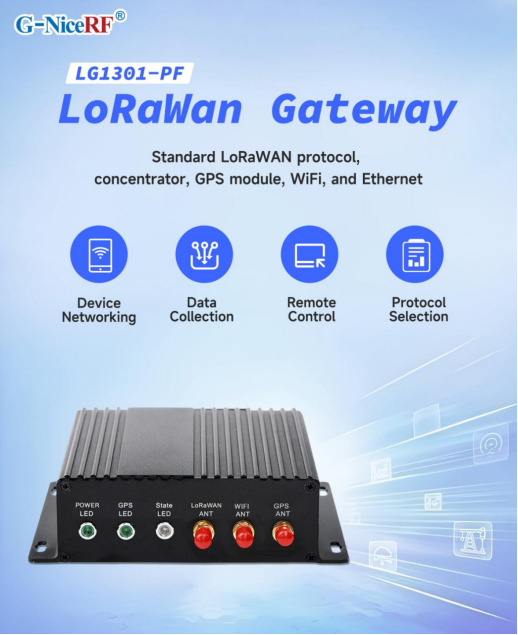
By using NiceRF LoRa gateway devices, sensor equipment in the irrigation field (such as temperature sensors, humidity sensors, light sensors, CO2 sensors, etc.) can be connected in real-time. These sensors collect data in real-time and periodically upload it to the cloud platform or local host computer via LoRa modules. This setup enables remote monitoring, fault alarms, equipment management, and provides scientific and reliable data support for adjusting irrigation strategies.
Data Monitoring Function: The sensor equipment monitors data such as air temperature, air humidity, CO2 levels, light intensity, soil moisture, and soil temperature. This data is transmitted through the LoRa gateway to the cloud platform, allowing users to analyze and process the information conveniently.
Remote Control and Adjustment: The LoRa gateway can connect to irrigation equipment, enabling remote control of the irrigation system. By sending commands from the cloud platform to the LoRa gateway, users can adjust irrigation equipment, such as remotely starting or stopping the equipment or adjusting irrigation parameters. This allows for intelligent irrigation based on feedback from soil moisture sensors, providing precise water management, reducing waste, and improving irrigation efficiency.
Anomaly Alarms and Warnings: The LoRa gateway can monitor abnormal conditions in the farmland environment and send alarm messages to users through the cloud platform. For instance, if soil moisture levels are too low or too high, the LoRa gateway can promptly issue an alert, reminding farmers to take appropriate irrigation measures.
Energy Efficiency Optimization: The gateway is designed with low power consumption features. By optimizing energy management and data transmission frequency, it effectively extends the operating time of the equipment, reduces energy costs, and enhances system sustainability.
For details, please click:https://www.nicerf.com/products/ Or click:https://nicerf.en.alibaba.com/productlist.html?spm=a2700.shop_index.88.4.1fec2b006JKUsd For consultation, please contact NiceRF (Email: [email protected]).
0 notes
Text
LoRa GSM RJ45 System Connect Multiple Wireless Node Greenhouse Planting
LoRa gateway S281 uses LoRa RF communication technology to transmit equipment data from multiple points in a discrete distribution to the gateway through wireless LoRa nodes, and the LoRa gateway processes the data and transmits it to the server through Ethernet or 4G network, thus realizing remote data acquisition and monitoring. LoRa gateway supports a variety of wireless LoRa nodes, including temperature&humidity, weather, soil, gas, RS485 to wireless module nodes. Support access to the cloud, can realize history record query, high and low temperature over limit abnormal alarm, support voice, WeChat, SMS, APP, WEB monitoring platform, email and other ways to alarm. Widely used in heating, greenhouse planting, breeding, workshop, warehouse, fresh, flow, liquid level, mine and other industries.
Support 50 wireless temperature&humidity, relay, digital input, soil, weather and other types nodes;
Support 50 RS485 serial wireless module nodes;
Monitoring radius up to 2KM;
Support 10 user numbers for receiving specific SMS alarm messages for device daily reports, dropouts, serial data overruns, and abnormal triggers;
Real-time monitoring of terminal battery power to ensure that device data is not dropped;
Using local configuration software, remote SMS and APP to set parameters, easy to operate and use.





0 notes
Text
Indoor Bluetooth Gateway LoRaWAN: Revolutionizing Indoor Tracking
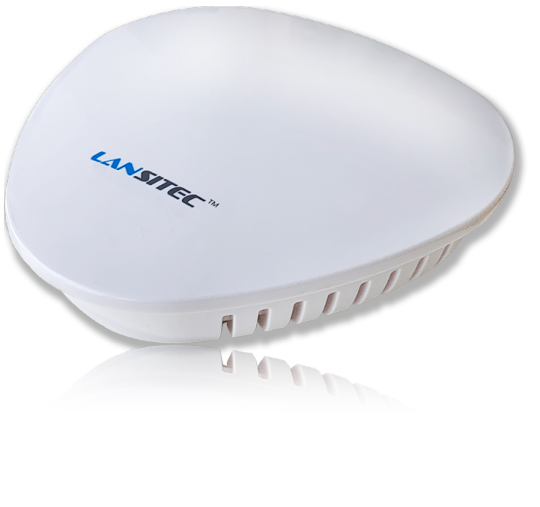
View On WordPress
An Indoor Bluetooth gateway is a device that implements Bluetooth 5.0 and LoRaWAN protocols. It acts as a bridge between Bluetooth beacons and a cloud server by receiving BLE packets and forwarding them over LoRa. This enables long-range communication without incurring cellular network costs. By leveraging our proprietary technology, it can handle any BLE packet format.
2 notes
·
View notes
Text
Top Hart to Modbus Gateway Suppliers for Seamless Integration
Looking for reliable Hart to Modbus Gateway suppliers? We offer high-performance solutions for industrial automation and process control systems. Enhance your data communication with our plug-and-play gateways that support real-time monitoring and efficient system integration.

0 notes
Text
GPIOs do LoRaMesh da Radioenge: Portas digitais
Aprenda como usar as GPIOs do módulo LoRaMesh da Radioenge
As GPIOs do LoRaMesh da Radioenge possibilita que possamos fazer aplicações de automação com um uso reduzido de hardware, dedicando apenas ao circuito de chaveamento (se necessário) e de alimentação. No total temos no LoRaMesh 8 GPIOs sendo todas configuráveis como entrada ou saída digital e duas como leitura analógica. Porém neste post vamos apenas abordar as portas digitais. Por qual motivo…
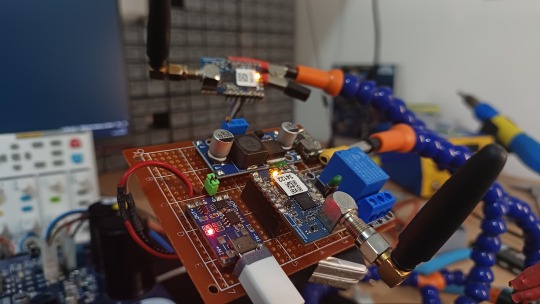
View On WordPress
#lora mesh arduino#lora mesh chat#lora mesh device#lora mesh library#lora mesh module#lora mesh network#lora mesh network raspberry pi#lora mesh protocol#lora mesh radio#lora mesh range#lora vs lorawan#loramesh#lorawan#lorawan devices#lorawan gateway#lorawan network#mesh lora
0 notes
Text
What is the difference between the LoRaWAN wireless module and LoRa gateway wireless transmission technology?
Many individuals find it challenging to differentiate between the LoRaWAN wireless module and LoRa gateway wireless transmission technology, as well as their applications within the realm of IoT.
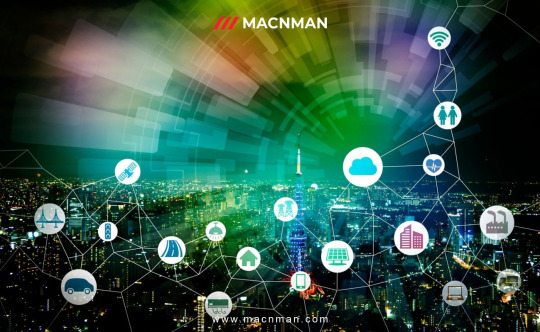
LoRaWAN specifically pertains to the networking protocol found within the MAC (Media Access Control) layer. In contrast, LoRa serves as a protocol within the physical layer. Although current LoRaWAN networking implementations utilize LoRa as the physical layer, it's worth noting that the LoRaWAN protocol also allows for the use of GFSK (Gaussian Frequency-Shift Keying) as the physical layer in specific frequency bands. From a network layering perspective, LoRaWAN can adopt various physical layer protocols, just as LoRa can serve as the physical layer for other networking technologies.
LoRa, as a technology, falls under the category of LPWAN (Low-Power Wide-Area Network) communication technologies. It represents an ultra-long-distance wireless transmission method based on spread spectrum technology, pioneered and promoted by Semtech in the United States. This approach revolutionizes the previous trade-off between transmission distance and power consumption, offering users a straightforward system capable of achieving extended range, prolonged battery life, and increased capacity. Consequently, it expands the capabilities of sensor networks. Currently, LoRa predominantly operates within free frequency bands globally, including 433/868/915MHz, among others.
On the other hand, LoRaWAN wireless communication stands as an open standard defining the communication protocol for LPWAN technology based on LoRa chips. LoRaWAN defines the Media Access Control (MAC) layer at the data link level and is overseen by the LoRa Alliance. It's crucial to distinguish between LoRa and LoRaWAN because companies like Link Labs utilize a proprietary MAC layer in conjunction with LoRa chips to create more advanced hybrid designs, such as Link Labs' Symphony Link.
LoRaWAN typically employs a star or star-to-star topology, which is generally considered superior to mesh networks due to advantages such as conserving battery power and extending communication range. In a star topology, messages are relayed to a central server through gateways, and each end node can transmit data to multiple gateways. These gateways then forward the data to the web server, where tasks like redundancy detection, security checks, and message scheduling are executed.
In summary, LoRa encompasses solely the link layer protocol, making it suitable for point-to-point (P2P) communication between nodes. In contrast, LoRaWAN includes the network layer, allowing data to be sent to any base station connected to a cloud platform. By connecting the appropriate antenna to its socket, the LoRaWAN module can operate at different frequencies, offering versatility in its applications.
0 notes
Text
youtube
#915 MHz Antennas#Lora Antenna 915mhz#SMA Connector#915MHz LoRa Gateway Antenna#ISM chip antenna#Omni-Directional Antenna#High-Efficiency Antenna#fiberglass omnidirectional outdoor antenna#5 dBi Dipole Antenna#Ceramic Antenna#High gain antenna#UHF 915 MHz RFID ANTENNAS#Spring Antenna#RFantenna#EVcharger#iotloraantenna#Youtube
0 notes
Text
The Perfect Finale Ch36
Balan walked to the door and slowly opened it while it was the entrance to Wonderworld, bits and pieces of the once intact Balan Theater were still there...suspended and floating in the air. What surrounded the door could only be described as "The Space between Dimensions." As a cascade of colors and lights flashed between them.
Balan blinked at the chaos, this was why there was a theater as Wonderworld's gateway, it was less...off-putting than the empty dimensional space that surrounded them now. "Well...Be ready. And be careful, there's still debris everywhere." He said. The humans and Lance slowly filed in, but at the same time, they couldn't help but feel worried about the way that Wonderworld's entrance was without the theater in place.
"Is this what the way to Wonderworld actually looks like? Without the theater?" Sana asked. "Yes. This is the entry point. No glamor, no stage, just a blank, and somewhat chaotic slate." Lance said. "And you can see that if Wonderworld's entrance stayed like this, then we wouldn't have ANY visitors." Balan added. "I can see why. This would creep people out a little bit..." Lora said.
"At least once we beat Yin, we can make the theater come back! Or at least make a temporary entrance until it does!" Haoyu said, ducking underneath a broken piece of wood larger than his own self. "Well...That depends. We have to see if we can get our power back as well. Yin did take those before he tossed us out, and the theater crumbled." Lance said, shivering at the memory of Yin.
Balan and the humans cringed. Another reminder that Yin was still the looming threat. And unless Prim (or in this case "Yang") was taken care of, Yin was just going to get more and more powerful, destroying Wonderworld in the process. No matter what, it was important that Prim was returned to normal, and Yin stripped of his power once more. "Yes...Yin is still a problem. But hopefully this plan will work." Mei said.
After a few moments of walking through what felt to be an endless void, the group had finally made it back to Wonderworld...but something was telling them that it wouldn't be the same way it was before Yin got back in. "This is it everyone...We must be careful. Wonderworld might not be very safe for us all anymore...but we must be ready." Balan said, determination in his eyes.
The group nodded as they made their way into Wonderworld...but they found themselves all gasping in horror at what they saw...
This wasn't the Wonderworld that they remembered...
Mei belongs to @sundove88
Lora Jade belongs to @alex-frostwalker
9 notes
·
View notes
Text
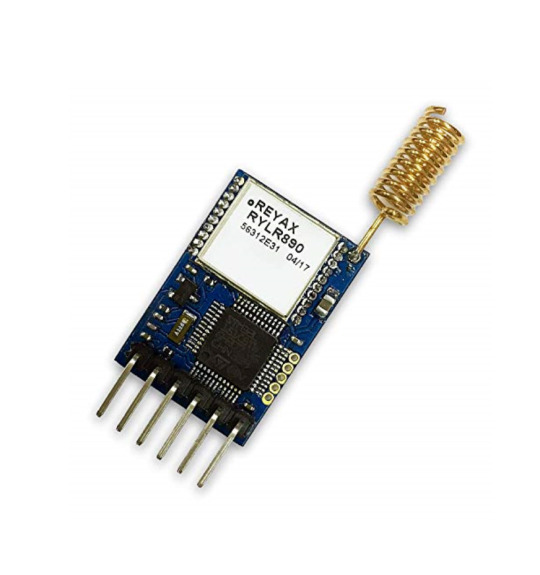
LoRa communication Module
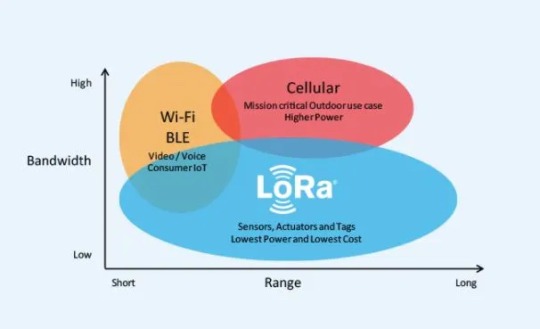
youtube
:
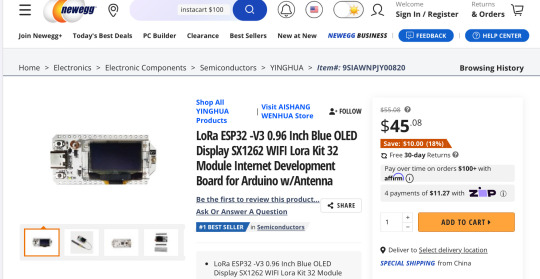
. https://www.newegg.com/p/2A3-00UG-000J9
youtube
.
.
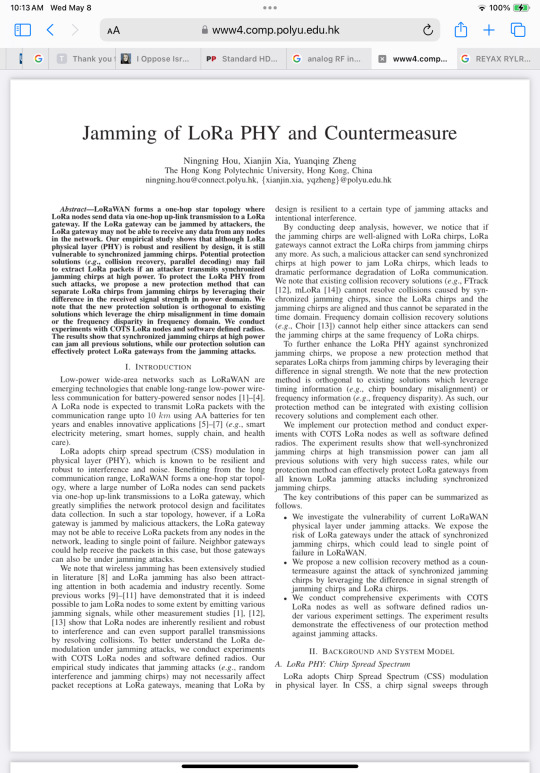
. https://www4.comp.polyu.edu.hk/~csyqzheng/papers/LoRaJamming-INFOCOM21.pdf
2 notes
·
View notes
Text
0 notes
Text

Differences Between Noise, Phase Noise, SNR, and Noise Figure in a LoRa Module's Wireless Communication
In wireless communication using a LoRa module, noise, phase noise, signal-to-noise ratio (SNR), and noise figure are crucial concepts used to describe signal and noise characteristics. Their differences are as follows:
1.Noise: In a LoRa module, wireless communication noise refers to the random disturbances present in signals. It arises from the irregular thermal oscillations caused by the Brownian motion of electrons. Multiple sources, such as electronic components, thermal noise, and electromagnetic interference, contribute to this noise. This noise can reduce the signal's quality and reliability.
2.Phase Noise: This denotes the module's random phase signal variations. It disturbs the phase of a sine wave signal, leading to the broadening of the signal spectrum bandwidth. Oscillators or clock systems usually introduce phase noise, which significantly impacts the performance and spectral efficiency of the wireless communication system of a LoRa module.
3.Signal-to-Noise Ratio (SNR): SNR measures the ratio between the average power of a signal and the average power of noise. It's an essential indicator of signal quality. A higher SNR indicates a stronger signal with less noise, which is beneficial for enhancing the reliability and performance of the wireless communication system in a LoRa module.
4.Noise Figure: In wireless transmission using a LoRa module, the noise figure indicates the SNR loss between input and output. It gauges the additional noise power introduced once the input signal goes through the module. A lower noise figure suggests better performance in the module's wireless communication, with lesser noise power introduction.
In summary, in the wireless communication of a LoRa module, noise is the random disturbance in the signal, phase noise is the signal's random phase disturbance with frequency variation, SNR measures the quality of the signal, and the noise figure evaluates the noise power introduced by the module during signal transmission. These concepts offer various perspectives and applications when analyzing the relationship between signals and noise and the module's performance.
For details, please click:https://www.nicerf.com/uart-transceiver-module/lora-rf-module-lora611pro.html
Or click:https://www.alibaba.com/product-detail/Lora611-PRO-4Km-long-range-100mW_1600498427052.html?spm=a2747.manage.0.0.4aca71d2MSoNGh
For consultation, please contact NiceRF (Email: [email protected]).
0 notes
Text
8 Channel Indoor LoRaWAN Gateway | SX1302 LoRa Gateway

The Lansitec Indoor LoRaWAN Gateway is designed for easy indoor deployment, featuring built-in Ethernet, optional LTE uplink, and 2.4 GHz Wi-Fi for quick AP-based configuration. Powered by Semtechu2019s SX1302 chipset and supporting LoRaWAN V1.0.3, this gateway offers a scalable solution for small to medium-sized IoT applications. With OpenWRT software, built-in network server, and PoE compatibility, it simplifies installation and reduces both hardware and operational costs.
For More:
#commercial LoRaWAN Gateway#indoor Lorawan gateway#8 channel indoor lorawan gateway#Sensor integration#SX1302 LoRa Gateway#iot#lansitec#lora#technology#lorawan#bluetooth#wireless#gps
0 notes
Text
Helium FreedomFi 5G Gateway Miner Teardown
Duration: 45 minutes Steps: 5 Steps Taking apart the FreedomFi 5G Gateway Miner uncovers a straightforward setup: a basic Celeron J1900 Bay Trail embedded board with 4GB of RAM, a 64GB mPCIe M-SATA SSD, and a mPCIe RAK Wireless LoRa card. With a little patience, you’ll see all these components laid out clearly. If you need a hand during reassembly or encounter something tricky, you can always…
0 notes
Text
Why IoT Gateway Is Key to Modern Water Management
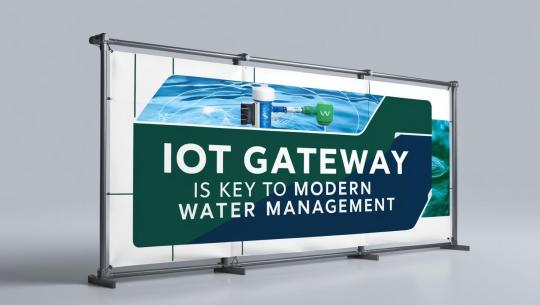
Water is one of the most critical natural resources for life, agriculture, and industries. With growing demand and climate-related challenges, managing water sustainably is more important than ever. This is where modern technologies like the IoT gateway play a crucial role in bridging traditional systems with real-time, connected water management solutions.
IoT gateways are helping organizations collect, process, and act on water data in ways that were not possible before. In this blog, we’ll explore how an IoT gateway works, its role in sustainable water management, and how it supports various use cases such as IoT tank level monitoring, industrial IoT, and IoT remote monitoring solutions.
What Is an IoT Gateway?
An IoT gateway is a bridge between IoT devices and cloud-based systems or local servers. It gathers data from sensors and devices, processes it locally or forwards it to the cloud for analytics. This reduces latency, improves performance, and enhances data security.
In water systems, the IoT gateway connects sensors monitoring flow, pressure, tank levels, and water quality. It ensures the data is reliable, timely, and actionable, which is vital for smart and sustainable decisions.
Why Water Systems Need an IoT Gateway
Water infrastructure often includes remote or hard to access areas like reservoirs, pumping stations, tanks, and treatment plants. These areas generate huge volumes of data, but without a reliable gateway, this data may not be collected efficiently.
Here’s why using an IoT gateway in water systems is essential:
Real-time data collection from multiple field sensors
Edge processing to filter and analyze data before transmission
Stable connectivity even in remote or rural areas
Integration with SCADA, cloud platforms, and mobile apps
Support for various communication protocols (LoRa, NB-IoT, 4G, Wi-Fi, Ethernet)
By using an IoT gateway, organizations can avoid manual data handling and get access to continuous monitoring and insights.
How IoT Gateway Enables Sustainable Water Management
1. Real-Time Water Monitoring
IoT gateways enable real-time monitoring of key parameters like water flow, consumption, tank levels, and leakage. When integrated with IoT tank level monitoring systems, they help ensure that tanks are neither underfilled nor overflowing, saving water and energy.
With real-time alerts, water managers can detect unusual consumption patterns or leaks early, reducing waste and improving system efficiency.
2. Water Quality Tracking
Maintaining water quality is crucial for both drinking and industrial use. Sensors that measure parameters such as pH, turbidity, TDS, and chlorine levels can feed data to the IoT gateway. The gateway then transmits this data securely to monitoring systems for review.
This enables faster decision-making and ensures that contaminated water doesn't reach consumers.
3. Smart Irrigation Control
In agriculture, sustainable water use is a major concern. With IoT gateways, smart irrigation systems can operate based on soil moisture levels, weather forecasts, and crop type. The gateway gathers and processes this data to automate irrigation, reducing overwatering and saving valuable resources.
This setup also allows integration with IoT device monitoring tools that track the health of irrigation pumps, valves, and field sensors.
Integration with Industrial IoT
Water usage in industries can be intense and unpredictable. An IoT gateway helps bring water monitoring into the world of industrial IoT. It enables factories and processing plants to:
Track water usage by process or department
Automate usage reporting and billing
Monitor water pressure and temperature in real time
Ensure compliance with environmental regulations
For example, a manufacturing plant using a large volume of water can set usage limits, detect equipment malfunctions, and optimize water recycling systems through the gateway’s continuous monitoring features.
Energy Efficiency in Water Operations
Sustainable water management also means using less energy. Water pumping and treatment facilities consume significant amounts of electricity. By using an IoT gateway, facilities can track energy consumption, detect inefficiencies, and make adjustments to save power.
Gateways can combine data from energy meters and water pumps, enabling operators to correlate energy use with water output. This insight helps reduce carbon emissions and operating costs.
Remote Monitoring and Predictive Maintenance
Thanks to the IoT Remote Monitoring Solution, water systems no longer need manual checks. The IoT gateway makes it possible to track pumps, tanks, pipelines, and filtration units from a central dashboard.
If a motor is running hotter than usual or if water levels fall below a threshold, the gateway triggers alerts to maintenance teams. This helps avoid failures and reduces downtime.
Moreover, predictive maintenance becomes easier when historical data is collected through the gateway and analyzed over time. You can know when to service equipment before it breaks down.
Scalable and Secure Water Management
Scalability is another benefit of using an IoT gateway. Whether you’re managing 10 or 10,000 sensors, the gateway acts as a middle layer that handles data efficiently.
Also, gateways support secure data transmission, ensuring that sensitive water usage or operational data is not exposed to threats. Most modern gateways include:
Data encryption
Authentication protocols
OTA (Over-the-Air) updates
Firewall support
These features are crucial for secure IoT device management and ensure long-term reliability of the system.
Use Case: Smart City Water Network
In a smart city project, municipal bodies can use IoT gateways to connect distributed sensors across water tanks, treatment plants, pipelines, and public taps. The gateway aggregates all the data, allowing for:
Leak detection in underground pipelines
Fair billing through usage-based metering
Reducing non-revenue water
Ensuring 24x7 supply in underserved areas
This system can work alongside IoT tank level monitoring to prevent overflow in urban storage tanks.
Benefits of Using IoT Gateway in Water Management
Water is one of the most critical natural resources for life, agriculture, and industries. With growing demand and climate-related challenges, managing water sustainably is more important than ever. This is where modern technologies like the IoT gateway play a crucial role in bridging traditional systems with real-time, connected water management solutions.
IoT gateways are helping organizations collect, process, and act on water data in ways that were not possible before. In this blog, we’ll explore how an IoT gateway works, its role in sustainable water management, and how it supports various use cases such as IoT tank level monitoring, industrial IoT, and IoT remote monitoring solutions.
What Is an IoT Gateway?
An IoT gateway is a bridge between IoT devices and cloud-based systems or local servers. It gathers data from sensors and devices, processes it locally or forwards it to the cloud for analytics. This reduces latency, improves performance, and enhances data security.
In water systems, the IoT gateway connects sensors monitoring flow, pressure, tank levels, and water quality. It ensures the data is reliable, timely, and actionable, which is vital for smart and sustainable decisions.
Why Water Systems Need an IoT Gateway
Water infrastructure often includes remote or hard to access areas like reservoirs, pumping stations, tanks, and treatment plants. These areas generate huge volumes of data, but without a reliable gateway, this data may not be collected efficiently.
Here’s why using an IoT gateway in water systems is essential:
Real-time data collection from multiple field sensors
Edge processing to filter and analyze data before transmission
Stable connectivity even in remote or rural areas
Integration with SCADA, cloud platforms, and mobile apps
Support for various communication protocols (LoRa, NB-IoT, 4G, Wi-Fi, Ethernet)
By using an IoT gateway, organizations can avoid manual data handling and get access to continuous monitoring and insights.
How IoT Gateway Enables Sustainable Water Management
1. Real-Time Water Monitoring
IoT gateways enable real-time monitoring of key parameters like water flow, consumption, tank levels, and leakage. When integrated withIoT tank level monitoring systems, they help ensure that tanks are neither underfilled nor overflowing, saving water and energy.
With real-time alerts, water managers can detect unusual consumption patterns or leaks early, reducing waste and improving system efficiency.
2. Water Quality Tracking
Maintaining water quality is crucial for both drinking and industrial use. Sensors that measure parameters such as pH, turbidity, TDS, and chlorine levels can feed data to the IoT gateway. The gateway then transmits this data securely to monitoring systems for review.
This enables faster decision-making and ensures that contaminated water doesn't reach consumers.
3. Smart Irrigation Control
In agriculture, sustainable water use is a major concern. With IoT gateways, smart irrigation systems can operate based on soil moisture levels, weather forecasts, and crop type. The gateway gathers and processes this data to automate irrigation, reducing overwatering and saving valuable resources.
This setup also allows integration with IoT device monitoring tools that track the health of irrigation pumps, valves, and field sensors.
Integration with Industrial IoT
Water usage in industries can be intense and unpredictable. An IoT gateway helps bring water monitoring into the world of industrial IoT. It enables factories and processing plants to:
Track water usage by process or department
Automate usage reporting and billing
Monitor water pressure and temperature in real time
Ensure compliance with environmental regulations
For example, a manufacturing plant using a large volume of water can set usage limits, detect equipment malfunctions, and optimize water recycling systems through the gateway’s continuous monitoring features.
Energy Efficiency in Water Operations
Sustainable water management also means using less energy. Water pumping and treatment facilities consume significant amounts of electricity. By using an IoT gateway, facilities can track energy consumption, detect inefficiencies, and make adjustments to save power.
Gateways can combine data from energy meters and water pumps, enabling operators to correlate energy use with water output. This insight helps reduce carbon emissions and operating costs.
Remote Monitoring and Predictive Maintenance
Thanks to the IoT Remote Monitoring Solution, water systems no longer need manual checks. The IoT gateway makes it possible to track pumps, tanks, pipelines, and filtration units from a central dashboard.
If a motor is running hotter than usual or if water levels fall below a threshold, the gateway triggers alerts to maintenance teams. This helps avoid failures and reduces downtime.
Moreover, predictive maintenance becomes easier when historical data is collected through the gateway and analyzed over time. You can know when to service equipment before it breaks down.
Scalable and Secure Water Management
Scalability is another benefit of using an IoT gateway. Whether you’re managing 10 or 10,000 sensors, the gateway acts as a middle layer that handles data efficiently.
Also, gateways support secure data transmission, ensuring that sensitive water usage or operational data is not exposed to threats. Most modern gateways include:
Data encryption
Authentication protocols
OTA (Over-the-Air) updates
Firewall support
These features are crucial for secure IoT device management and ensure long-term reliability of the system.
Use Case: Smart City Water Network
In a smart city project, municipal bodies can use IoT gateways to connect distributed sensors across water tanks, treatment plants, pipelines, and public taps. The gateway aggregates all the data, allowing for:
Leak detection in underground pipelines
Fair billing through usage-based metering
Reducing non-revenue water
Ensuring 24x7 supply in underserved areas
This system can work alongside IoT tank level monitoring to prevent overflow in urban storage tanks.
Benefits of Using an IoT Gateway in Water Management
Real-time Monitoring:
Allows operators to track water systems in real time, identifying issues like leaks or overuse quickly.
Helps reduce waste and avoid expensive repairs by addressing problems early.
Faster Decision Making:
Uses edge computing to process data locally and make quick decisions.
Can trigger actions like turning off pumps or sending alerts about equipment issues immediately.
Support for Different Devices:
Converts different communication signals into a unified format, making it easier to connect various devices and sensors.
Allows easy system growth by adding more sensors or devices as needed.
Remote Monitoring:
Enables operators to monitor water systems from anywhere without needing to be on-site.
Saves time and resources, especially for large-scale systems like city water networks or agricultural irrigation.
Predicting Problems Before They Happen:
Analyzes data to spot early signs of equipment issues, like malfunctioning pumps or pipes.
Helps fix problems before they cause significant damage, reducing downtime and repair costs.
Secure Communication:
Ensures that data shared between devices and the central system is encrypted and protected.
Keeps data safe from unauthorized access or hacking, maintaining system trust and security.
Easily Scalable:
Makes it simple to add new sensors or devices as the water system expands.
Ensures the system remains reliable and efficient even as it grows.
Final Thoughts
As water scarcity continues to grow globally, adopting technology for better water use is no longer optional, it’s necessary. The IoT gateway acts as a central piece in the puzzle of sustainable water management, making data-driven decisions possible for agriculture, cities, and industries alike.
By enabling seamlessIoT device monitoring, supporting industrial IoT applications, and integrating with IoT remote monitoring solutions, IoT gateways are transforming how we manage water systems.
Whether you're a municipal planner, a farmer, or an industrial operator, investing in a reliable IoT gateway is a step toward smarter, more sustainable water use.
Final Thoughts
As water scarcity continues to grow globally, adopting technology for better water use is no longer optional, it’s necessary. The IoT gateway acts as a central piece in the puzzle of sustainable water management, making data-driven decisions possible for agriculture, cities, and industries alike.
By enabling seamless IoT device monitoring, supporting industrial IoT applications, and integrating with IoT remote monitoring solutions, IoT gateways are transforming how we manage water systems.
Whether you're a municipal planner, a farmer, or an industrial operator, investing in a reliable IoT gateway is a step toward smarter, more sustainable water use.
0 notes
Text
Leitura analógica do LoRaMesh da Radioenge
Aprenda como usar a leitura analógica com o módulo LoRaMesh da Radioenge
A leitura analógica com o LoRaMesh possibilita com que possamos fazer um amplo sistema de sensoriamento remoto sem precisar necessariamente de microcontrolador adicional na parte do slave. Por qual motivo usar a leitura analógica do LoRaMesh da Radioenge? Uma leitura digital em muito dos casos já é mais que o suficiente para saber se algo está ou não funcionando, mas a leitura analógica do…
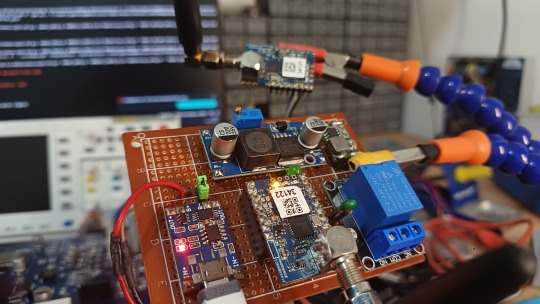
View On WordPress
#lora mesh arduino#lora mesh chat#lora mesh device#lora mesh library#lora mesh module#lora mesh network#lora mesh network raspberry pi#lora mesh protocol#lora mesh radio#lora mesh range#lora vs lorawan#loramesh#lorawan#lorawan devices#lorawan gateway#lorawan network#mesh lora
0 notes